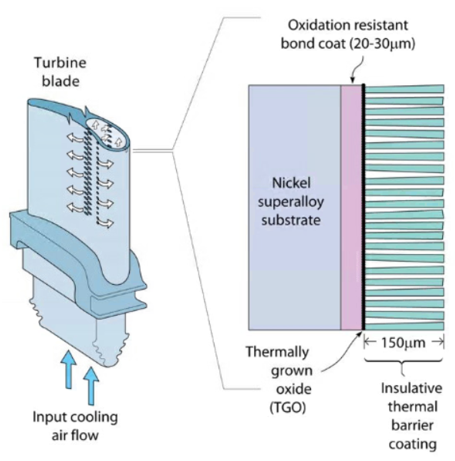Gas turbine blades and vanes are subject to extreme operating conditions. Thermal-barrier coatings (TBCs) are applied to the surface of those parts to protect them. A TBC has two layers, an aluminum-rich bond coat to provide oxidation resistance, and a ceramic topcoat to provide thermal protection.
During exposure to a high working temperature, a very thin layer of thermally grown oxide (TGO) is formed between the bond coat and the top coat. The TGO grows under the cyclic high operating temperature. The growth of TGO causes interfacial cracks to initiate, grow, and coalesce, eventually causing the TBC to fail:[1]
The cyclic-loading analysis capability offered by Mechanical APDL, makes it possible to define cyclic-loading blocks and to specify the number of cycles in a fatigue-loading analysis. Furthermore, the cycle-jump method accelerates the fatigue-loading analysis, significantly decreasing computational time while maintaining analysis accuracy.



